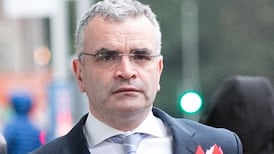Change is coming to RTÉ. “Completely transformational” change, according to director general Kevin Bakhurst. “People might be cynical” that the public service broadcaster will make the changes it says it will, he acknowledged, but RTÉ has made some “significant” ones of late and is now on the cusp of its “third age”.
This, among other things, means shrinking its footprint, losing a fifth of its staff and decentralising its operations, all over the next five years. But we already knew this. The headline on Tuesday was that Carrigstown, Fair City’s fictional suburb, is on the move – again. And whereas the 2017 relocation of its set was a modest one, from a stretch of Montrose that RTÉ sold to another part of the campus that it still owned, this time the proposed move signifies a more fundamental shift.
As he unveiled his fleshed-out 2025-2029 strategy to RTÉ employees, Bakhurst said production of the in-house soap would relocate off-site as part of a reduced RTÉ presence in Donnybrook – but also that independent production companies would be invited to discuss the possibility of making it for RTÉ.
What’s more, other shows integral to the RTÉ brand, such as the Late Late Show, will also move off-site within five years, and may eventually be made by the independent sector in conjunction with an in-house editorial team.
READ MORE
His comments are said to have landed with a thud at an RTÉ “town hall”. But the potential jettisoning of Fair City is, in particular, not surprising. RTÉ has long promised to boost the value of its independent commissioning and now says it will rise from €47 million this year to €55 million in 2025 and then about €70 million a year from 2026. The ways to reach this target are limited. Fair City, which Bakhurst has suggested costs €12 million a year or “a big chunk of money” to make, could also qualify for the Section 481 tax credit if it was independently produced.
The ageing studio infrastructure at Donnybrook, meanwhile, points to the logic of retreating to the end of the campus near the Nutley Lane entrance and broadcasting flagship shows such as the Late Late from external studios, rather than plunging taxpayers’ cash into major upgrades.
This is a strategy that hinges on unknowns as well as compromises. Although RTÉ plans to launch “a major daily peak-time programme” from Cork in 2027, for instance, scoping a site for a new Cork production facility won’t begin until next year. There is talk of “refreshed” schedules, RTÉ Player investment and (previously announced) new apps for news and audio, which all sound positive, but, as ever, depend upon sustainable public funding.
In the digital era – a “third age” after its radio beginnings and television expansion – RTÉ will be a smaller organisation, said Bakhurst, but it will have bigger ambitions. It’s a familiar storyline, but that doesn’t make it any easier to pull off.
- Listen to our Inside Politics Podcast for the latest analysis and chat
- Sign up for push alerts and have the best news, analysis and comment delivered directly to your phone
- Find The Irish Times on WhatsApp and stay up to date















